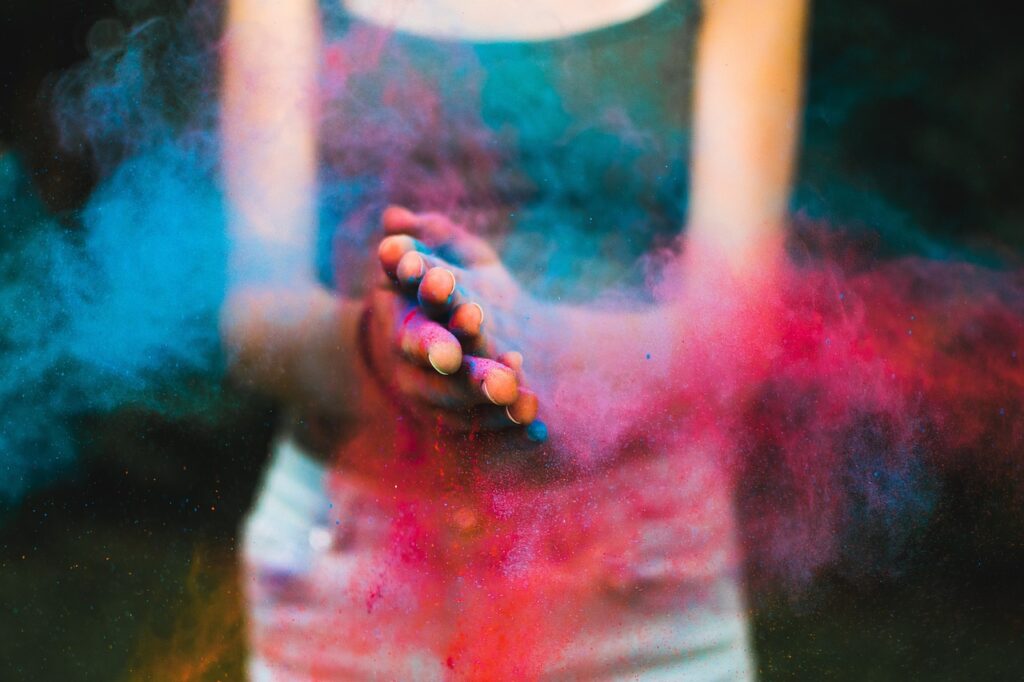
I really enjoy watching the ‘British’ creatives – Bake Off, Sewing Bee, Throwdown, Woodworker, as well as the Landscape and Portrait Artists of the Year. It’s great to see people give rein to their talent and learn something about them along the way. I’m less keen on the competitive element, but that’s the therapist in me and without it there wouldn’t be a tv show.
Some episodes can be quite emotive, with participants creating from their personal stories. Sometimes they are still very raw, and some obviously find the process cathartic. But there is a difference between creating art and it being therapeutic and a Creative Arts Therapy.
Creativity and Mental Health
Lots of people find that being creative helps their mental health, but while a creative leisure activity can evoke feelings of satisfaction and achievement through the act of creation, a Creative Arts Therapy is evidence-based treatment that uses creative arts while focusing on self-reflection and navigating emotional challenges. Arts therapists/psychotherapists use creative methods to address emotional issues which may be confusing and distressing.
There are many ways that creativity can help mental health. Creative Arts Therapy sessions are supported by a trained professional. They may be an Art Therapist, Dramatherapist, Music Therapist or Dance Movement Psychotherapist. Arts for the Blues is a therapeutic model, which combines them all. In my practice, clients will often use creative methods to reflect on our sessions together. These are the ones I have permission to share. Healing the Hurts, Rainbow Reflection, Painting My World.
Participants don’t need to have any skills or experience in the art forms, there is no right or wrong way to do the activities. And people of any age can benefit from them. Different people will have different experiences of arts and creative therapies, but in general they aim to
- help you make sense of things and understand yourself better
- give you a safe time and place with someone who won’t judge you
- help you find new ways to look at problems or difficult situations
- help you to talk about complicated feelings or difficult experiences
- give you a chance to connect with other people
Working with a Creative Arts Therapist
Creative Arts therapies combine the creative process with psychological theory and a therapeutic relationship. One of the most important aspects of this type of therapy, as with traditional psychotherapy, is the relationship between the client and the therapist. When facilitated by a professional Creative Arts therapist, sessions effectively support the client’s personal and relational treatment goals. This means there needs to be a therapeutic relationship specifically between the client and a trained and qualified arts therapist in order for it to be truly therapy.
Creativity is inherently therapeutic. However, if the facilitator is not appropriately trained, they will not have the tools to support the client through the creative process as a primary aspect of therapy. They need specialized knowledge or skills to recognize symbolism or engage in processing with the client. It is common for clients to experience catharsis or have intense emotions during the session. Arts Therapist has been formally trained to know how to safely support the client through this process.
Therapy is about the process
Another distinction worth mentioning is how therapy differs from a class, which focuses on technique, talent and aesthetics. Instead, therapy is about the process and is accessible to all levels of ability. It provides clients with creative methods in which they make new discoveries about themselves and work through past traumas, emotions and memories. All of this is done with an Arts Therapist.
There is no single approach. Sometimes we may use art materials and guided meditation, or perhaps we may create collages to put together meaningful words, images and objects. Arts therapy is simply an indirect, creative way to access the mind and emotions. In a session with a therapist, you are guided in processing emotions and insights. The therapist can help in identifying and processing difficult emotions that arise during the creative process.
There are so many wonderful benefits to arts therapies! They can help to improve cognitive and sensorimotor functions, promote self-esteem and self-awareness, develop emotional resilience and promote insight. Beyond the cognitive and emotional benefits, research shows that there are physical benefits, too. These include reduced physical pain and reduced stress. We know that stress is held in the body and there are many physical stress responses, so reduced stress is both physical and psychological benefit.
